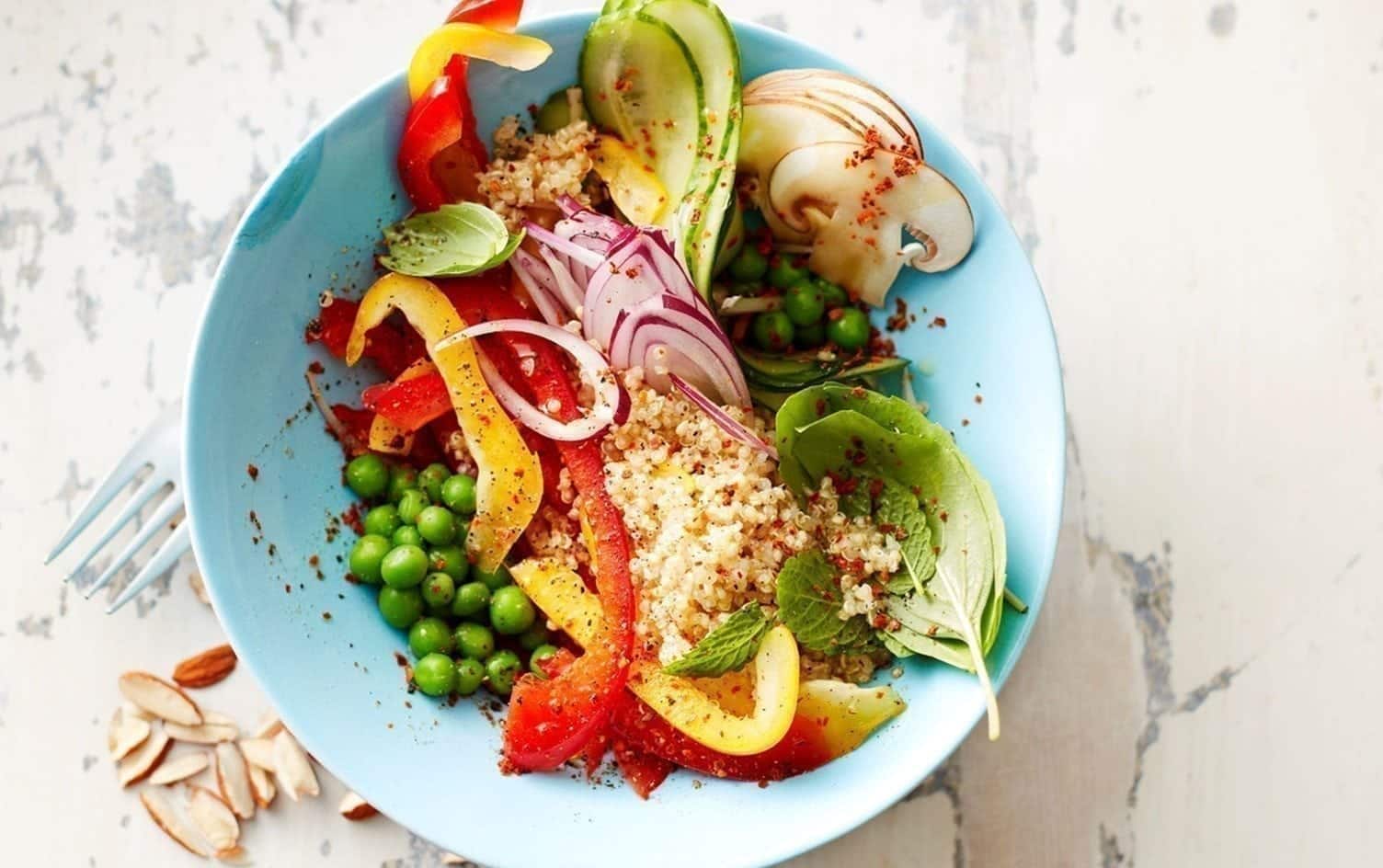Run of the mill, plant-based sources of protein such as tofu and other soy-based products, legumes, nuts and whole grains are officially trending, and for good reason. Eating fewer animal products and loading up on powerful plant proteins can help prevent and reverse chronic diseases such as cancer, heart disease and diabetes. Do your body a favor by swapping the steak n’ eggs for one or more of these surprising sources of plant protein. No protein powder required!
1. CHIA SEEDS
In addition to promoting hydration, chia seeds aren’t too shabby in the protein department. A 2-tablespoon serving packs 4 grams of protein plus a whopping 11 grams of fiber. Enjoy a bowl of creamy chia pudding with fresh fruit as a snack or add to oatmeal to spruce up your morning routine.
2. GREEN PEAS
We’re not talking snow or snap peas, here. The good ol’ frozen or canned variety (fresh if you can find them!) offers 8 grams of protein for just over 100 calories per cup. Add them to your favorite veggie lasagna or spring salad.
READ MORE > EASY WAYS TO EAT MORE PLANT PROTEIN
3. HEMP SEEDS
Three tablespoons of these super seeds packs 10 grams of plant protein plus a hefty dose of heart-healthy fats. Once blended, they add luxurious creaminess to any dish. Swap hemp seeds for pine nuts in pesto, add a spoonful to smoothies or sprinkle on salads.
4. LEAFY GREENS
Famed for their vitamin and mineral content, leafy greens are secretly an awesome source of protein, too. A cup of cooked spinach or collard greens adds 5 grams of protein to your daily tally. Add a big handful to smoothies, omelets and soup.
5. NUTRITIONAL YEAST
Affectionately known as “nooch,” this new-to-many ingredient is a favorite among vegans for it’s cheesey flavor and top-notch protein profile. Sprinkle it on popcorn, pasta or add to veggie burgers for 9 grams of protein per 2 tablespoon serving. You’ll also get 3 grams of fiber and a boatload of vitamin B12. #winning
6. OAT BRAN
The nutty outer casing of the oat grain is brimming with 6 grams of fiber and protein to boot. Boost the nutrient content of muffins by adding oat bran for up to a quarter of the flour. It can also be stirred into yogurt, stews, pasta dishes or casseroles for extra texture and flavor!
7. PUMPKIN SEEDS
Also known as pepitas, these are no ordinary seed; they are nutrition powerhouses boasting 7 grams of protein and 13 grams of heart-healthy fats per serving. Try toasting a cup of pumpkin seeds in the oven at 350°F for about 10 minutes and enjoy as a simple snack with dried fruit. They also add great crunch to salads, oatmeal and yogurt.
READ MORE > IS SOY SAFE?
8. QUINOA
Quinoa is a rare breed in the plant world because it’s a complete protein, meaning it contains all nine essential amino acids. It boasts 8 grams of protein per cup and cooks in just under 15 minutes. Try it as an a.m. oatmeal stand-in, as the base of a veggie-packed lunch salad or in place of rice at dinner time. For a flavor boost, boil it in vegetable broth rather than water.
9. SPIRULINA
Spirulina is a blue-green algae that has more protein per gram than … beef — 4 grams per tablespoon, to be exact. Plus, it’s loaded with disease-fighting antioxidants. Spirulina has a mild fishy flavor that’s undetectable in smoothies. Add a teaspoon to your next blend for the ultimate superfood cocktail.
10. TAHINI
Also known as sesame seed butter, tahini is a deliciously nutty Mediterranean stand-in for almond or peanut butter. It clocks in at just under 100 calories and 3 grams of protein per tablespoon. In addition to being one of the star ingredients in homemade hummus, we also love the creaminess it adds to salad dressing. Drizzle it over warm, roasted veggies for extra flair.
11. WILD RICE
This aquatic grass seed brings 6 grams of protein to every serving along with a distinctive nutty flavor and toothsome texture. The easiest way to cook it is like pasta, in plenty of salted boiling water until tender and then drain. Mix up your morning routine with some wild rice cooked until very tender and treat it like oatmeal, topped with dried fruits and/or nuts.
12. WHOLE-GRAIN PASTA
Whole-grain pasta is less processed and therefore higher in fiber and micronutrients than refined, white-flour pasta. A one-cup serving of whole-grain pasta clocks in at just under 8 grams of protein and 25% of the daily value of fiber. Use in place of regular pasta, knowing it matches best with stronger-flavored toppings.




